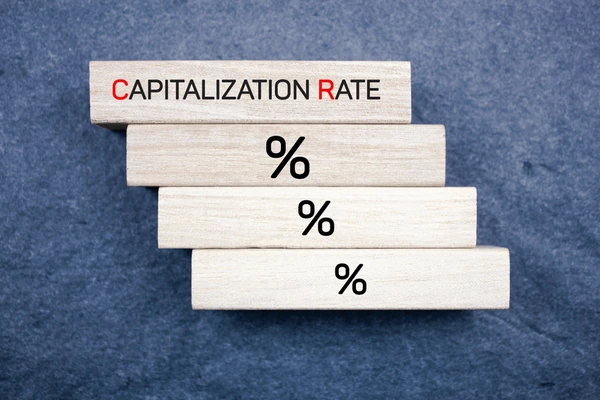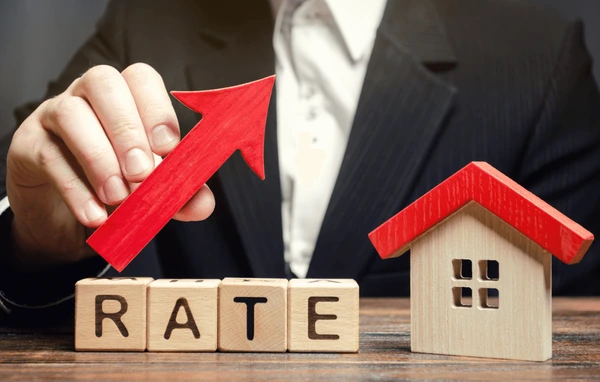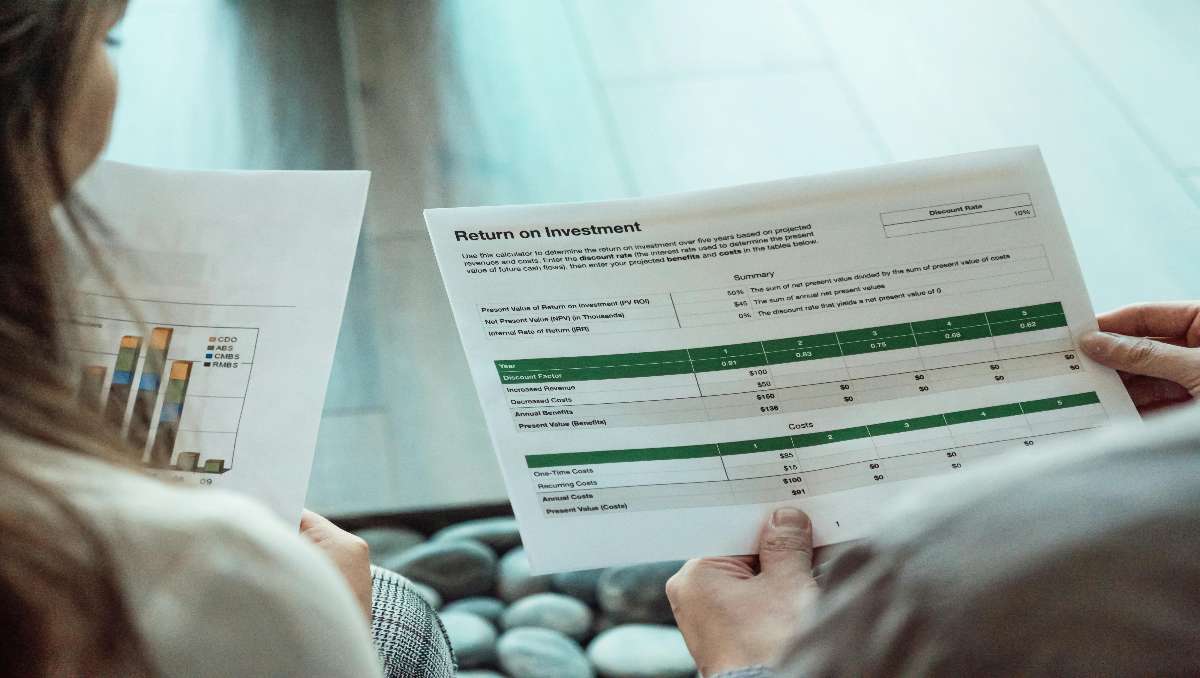What Is a Cap Rate in Real Estate & Why Is It Important?
Published on
August 6, 2025

Interested in growing wealth through investing in rental homes? Join the Priority Access List today.
When considering real estate investing, there are many numbers to look at and factors to consider. Among those numbers is the capitalization rate (cap rate). What is a cap rate in real estate and why is it important? We break it down for you.
Table of Contents
What is Cap Rate in Real Estate?
When is Real Estate Cap Rate Used?
How to Calculate Cap Rate
Calculating Capitalization Rate Example
What is the Importance of Cap Rate in Real Estate?
Uses and Limitations of Cap Rate
What is a Good Cap Rate in Real Estate?
How Other Market Conditions Influence Cap Rates
Cap Rate vs ROI
Cap Rate vs GRM
Cap Rate vs Cash on Cash Return
Cap Rate Meaning FAQs
What is Capitalization Rate: The Bottom Line
What is Cap Rate in Real Estate?
The capitalization rate or cap rate in real estate estimates your rate of return on a property investment. Of course, like any investments such as stock market, there's no way to know 100% what your rate of return will be. But the cap rate is a reasonable estimate.
The cap rate is the property's net operating income (NOI) divided by the purchase price. While it’s not a crystal ball, cap rates offer a helpful snapshot of a property’s income potential relative to its value, assuming market conditions remain stable. It’s often used to compare different investment opportunities, especially in commercial real estate.
When is Real Estate Cap Rate Used?
Cap rate is most commonly used when comparing income-generating properties or evaluating whether a specific property is a sound investment. It’s especially useful for investors analyzing rental properties where consistent cash flow is expected.
This metric is less effective for properties like raw land or fix-and-flip deals, where income isn’t stable or predictable. In those cases, other property valuation methods like after-repair value (ARV) or land appreciation potential are more appropriate. When used correctly, the cap rate helps investors compare risk and return across different markets and property types.

How to Calculate Cap Rate
How is cap rate calculated? It’s pretty straightforward. To figure out cap rate, you primarily need two crucial pieces of information: the property's net operating income (NOI) and its current market value or purchase price.
Cap Rate Formula
The cap rate formula is simple:
Net Operating Income/Purchase Price x 100 = Cap Rate
Occupancy Rate
The cap rate formula considers the net operating income but doesn't specifically consider the occupancy rate. The formula assumes 100% occupancy, which isn't a reality for most investment properties. Considering a 5 - 10% vacancy rate can provide a more realistic cap rate, helping you make a more informed decision and potentially take a lower risk.
Property Type
You can use the cap rate formula on just about any property type to determine which real estate investment makes the most sense, even if they have the same net operating income. However, the cap rate calculation is most commonly used on single-family homes, townhomes, multifamily properties, and commercial real estate.
Property Value
The property value or purchase price are the determining factors in the cap rate calculation. You divide the annual net operating income by the property value or purchase price to determine the cap rate. For example, the lower property value may overstate the cap rate if you're buying an undervalued property.
Rental Potential
The lower a property's vacancy rate is, the higher the NOI will be. But cap rates don't consider the vacancy rate. So it's a good idea when calculating the capitalization rate to consider the area's average vacancy rate, so you use an accurate NOI.
Age of Property
Older homes often need more renovations or repairs, which decreases the net operating income. Consider the property's age and the potential renovations it will need in the near future to ensure you use an accurate calculation for the net operating income.
Calculating Capitalization Rate Example
To understand how to determine a cap rate, here is a quick example.
Suppose you bought a property for $250,000, and the property's net operating income is $15,000. Your cap rate would be $15,000/$250,000 x 100 = 6%.
You can also use the cap rate and a property's NOI to determine how much you're willing to pay for a property. For example, if you want a capitalization rate of 8% and a property's net operating income is $10,000, you'd want to pay no more than $125,000 to make the investment worthwhile.
What is the Importance of Cap Rate in Real Estate?
The cap rate can provide a quick, standardized way to compare the risk and return of income-producing properties, especially when evaluating multiple opportunities across different markets.
Another key use of the cap rate is to gauge the estimated time to recover an investment. A 5% cap rate suggests it may take roughly 20 years to recoup the full purchase price (assuming stable income), while a 10% cap rate shortens that horizon to about 10 years. This helps investors align property choices with their financial goals and holding timelines.

Uses and Limitations of Cap Rate
Cap rates are a widely used tool among real estate investors for evaluating and comparing potential property investments. It helps assess both the expected return and relative risk of income-producing properties. Generally, a higher cap rate may suggest higher risk or greater reward, but that’s not always the case. Investors must dig deeper to understand what’s driving a cap rate above or below the market average.
For example, a high cap rate could indicate that a property is undervalued due to deferred maintenance, or it could reflect overstated rental income by the seller. Without context, cap rates alone don't provide the full picture.
While useful, the cap rate has important limitations:
- Historical Data Only: The formula typically uses net operating income (NOI) from the past 12 months, which may not accurately represent future performance.
- No Financing Consideration: Cap rate calculations do not account for mortgage costs or financing structure. If you're leveraging your investment with debt, your actual return (e.g., cash-on-cash return) could differ significantly.
What is a Good Cap Rate in Real Estate?
A reasonable cap rate varies by location. There isn't one number we can say is the right or best cap rate for a real estate investment. Since cap rates are a means to compare potential investment opportunities, you should look at how they compare to one another rather than looking for a specific number.
However, before comparing cap rates, think about what you want from your real estate investment. The two most common factors to consider are the cash flow and rate of appreciation.
Although markets can change, properties that produce good cash flow for the area typically don't appreciate fast, and properties that appreciate fast usually have lower cash flow. Usually, higher cap rate properties have higher cash flow and slower appreciation and vice versa.
How Other Market Conditions Influence Cap Rates
Cap rates don’t exist in a vacuum. They're directly shaped by broader market trends. Factors like inflation, GDP growth, employment rates, and consumer spending can all impact the supply and demand dynamics of the real estate market.
For example, during periods of strong economic growth, investor confidence rises, demand for commercial buildings increase, and cap rates may compress as competition drives up property values. On the other hand, in times of economic uncertainty or high inflation, cap rates often rise to reflect increased risk and decreased buying power.
Additionally, shifts in government policy, interest rate changes by central banks, and market liquidity all contribute to how cap rates adjust.
Cap Rate vs ROI
The cap rate and ROI are two often confused metrics. Since the real estate cap rate is your estimated return on investment, the two metrics seem the same. The ROI focuses on the individual return on a single investment. The cap rate helps you compare the ROI on multiple properties. You can compare the cap rates to determine which investment property offers the best risk and reward combination.

Cap Rate vs GRM
Cap rate vs. Gross Rent Multiplier or GRM are both tools used to evaluate real estate investments, but they measure value differently. The cap rate considers a property's NOI and offers a percentage-based return that accounts for operating expenses. In contrast, GRM is a simpler calculation that compares the property’s price to its gross rental income, without factoring in expenses. While GRM is useful for quick comparisons and screening potential deals, cap rate provides a deeper insight into a property's actual earning potential.
Cap Rate vs Cash on Cash Return
Capitalization rates and cash-on-cash return are both used to assess real estate investment performance, but they focus on different aspects of profitability. Cash-on-cash return calculates the return on the actual cash invested, typically reflecting post-financing performance by accounting for mortgage payments and other financing costs. While cap rate is ideal for comparing properties on a level playing field, cash-on-cash return provides a clearer picture of real-world investor returns. Both metrics are valuable and often used together.
Cap Rate Meaning FAQs
What is a Cap Rate in Commercial Real Estate?
The cap rate in commercial real estate is a widely used metric that helps investors evaluate the potential return on an income-producing property, such as office buildings, retail centers, or industrial facilities. A higher cap rate in commercial real estate may suggest greater return potential, but it can also indicate higher risk. Investors use this metric to compare different commercial properties and assess whether an asset aligns with their risk tolerance and investment goals.
Can Cap Rate Change?
Cap rates can change based on what you do with the property. For example, if you renovate the property, increasing its value, you lower the cap rate because you increase the profit. But, if you increase the value and can increase the rent, you may increase the cap rate for greater cash flow.
What is Cash Flow?
The cash flow you earn on a property is the money you earn from the rental income after paying the operating expenses. The expenses include mortgage, utilities, repairs or renovations, and other related expenses.
What Is the Internal Rate of Return?
The Internal Rate of Return or the IRR is the potential return you'll earn on a property based on the possible cash flow and property appreciation. Since these numbers are estimates, this isn't a guarantee of what you'll earn but an estimate of what to expect to help you make investing decisions.
What Is the Gordon Model?
The Gordon Growth Model is the equivalent of the capitalization rate but for stocks. It calculates a stock's inherent value. To calculate the Gordon Model, use the following equation:
Required rate of return - Expected growth rate = Expected cash flow/Asset value
To equate it to real estate, the expected cash flow is the NOI, and the asset value is the market value.
What is the Impact of Interest Rates on Cap Rates?
Interest rates have a direct impact on cap rates, influencing how real estate assets are valued and how attractive they appear to investors. When interest rates rise, borrowing costs increase, which often leads to higher cap rates and lower property values, as investors demand greater returns to offset the increased cost of capital. When interest rates fall, cap rates tend to compress, driving up property prices due to cheaper financing and increased demand.
What is Capitalization Rate: The Bottom Line
The cap rate is one measurement when deciding if a real estate investment is worth it. Of course, it shouldn't be the only metric you consider, but it can be a good way to compare real estate investment options to help you choose the one that provides the desired return. Learn more by signing up and visiting our blog.
Disclaimer
This information is educational, and is not an offer to sell or a solicitation of an offer to buy any security which can only be made through official documents such as a private placement memorandum or a prospectus. This information is not a recommendation to buy, hold, or sell an investment or financial product, or take any action. This information is neither individualized nor a research report, and must not serve as the basis for any investment decision. All investments involve risk, including the possible loss of capital. Past performance does not guarantee future results or returns. Neither Concreit nor any of its affiliates provides tax advice or investment recommendations and do not represent in any manner that the outcomes described herein or on the Site will result in any particular investment or tax consequence.Before making decisions with legal, tax, or accounting effects, you should consult appropriate professionals. Information is from sources deemed reliable on the date of publication, but Concreit does not guarantee its accuracy.


